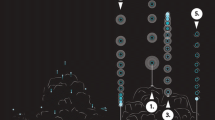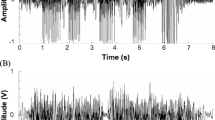Abstract
In birds, courtship is generally short relative to the whole breeding cycle. Emperor penguins (Aptenodytes forsteri), however, are an exception as their courtship period is much longer (ca. 6 weeks) than the courtship of other penguin species. This strategy may appear surprising, as it is especially costly to fast and endure drastic climatic conditions for long periods at the colony (1.5 and up to 4 months for females and males, respectively). We examined here the reasons of this extended courtship period and found that emperor penguins returned earlier to the colony when primary oceanic production before breeding was high. This suggests that emperor penguins return to the colony as soon as primary oceanic production in summer allows them to replenish their body reserves. The extended period of time spent at the colony during courtship may therefore result from an evolutionary process that confers advantages to emperor penguins that arrive earlier at the colony by reducing predation risks and offering better chances of securing a partner.


Similar content being viewed by others
References
Ainley DG, Ballard G, Karl BJ, Dugger KM (2005) Leopard seal predation rates at penguin colonies of different size. Antarct Sci 17:335–340. doi:10.1017/S0954102005002750
Ancel A, Visser H, Handrich Y, Masman D, Le Maho Y (1997) Energy saving in huddling penguins. Nature 385:304–305. doi:10.1038/385304a0
Ancel A, Beaulieu M, Le Maho Y, Gilbert C (2009) Emperor penguin mates: keeping together in the crowd. Proc Roy Soc B Biol Sci 276:2163–2169. doi:10.1098/rspb.2009.0140
Ballard G, Ainley DG (2005) Killer whale harassment of Adélie penguins at ross Island. Antarct Sci 17:385–386. doi:10.1017/S0954102005002828
Bried J, Jiguet F, Jouventin P (1999) Why do Aptenodytes penguins have high divorce rates? Auk 116:504–512
Charnov EL, Krebs JR (1974) On clutch size and fitness. Ibis 116:217–219
Croxall JP, Prince PA (1979) Antarctic seabird and seal monitoring studies. Polar Rec 19:573–595
Dunn PO, Winkler DW, Whittingham LA, Hannon SJ, Robertson RJ (2011) A test of the mismatch hypothesis: how is timing of reproduction related to food abundance in an aerial insectivore? Ecology 92:450–461. doi:10.1890/10-0478.1
Foxton P (1956) The distribution of the standing crop of zooplankton in the southern ocean. Discov Rep 28:191–236
Gilbert C, Robertson G, Le Maho Y, Naito Y, Ancel A (2006) Huddling behavior in emperor penguins: dynamics of huddling. Physiol Behav 88:479–488. doi:10.1016/j.physbeh.2006.04.024
González-Solís J, Becker PH, Wendeln H (1999) Divorce and asynchronous arrival in common sterns, Sterna hirundo. Anim Behav 58:1123–1129. doi:10.1006/anbe.1999.1235
Groscolas R, Jallageas M, Goldsmith A, Assenmacher I (1986) The endocrine control of reproduction and molt in male and female emperor (Aptenodytes forsteri) and Adélie (Pygoscelis adeliae) penguins. I. Annual changes in plasma levels of gonadal steroids and LH. Gen Comp Endocrinol 62:43–53. doi:10.1016/0016-6480(86)90092-4
Gunnarsson TG, Gill JA, Sigurbjörnsson T, Sutherland WJ (2004) Pair bonds: arrival synchrony in migratory birds. Nature 431:646. doi:10.1038/431646a
Hart TJ (1942) Phytoplancton periodicity in Antarctic surface waters. Discov Rep 21:261–356
Hipfner JM, McFarlane-Tranquilla LA, Addison B (2010) Experimental evidence that both timing and parental quality affect breeding success in a zooplanktivorous seabird. Auk 127:195–203. doi:10.1525/auk.2009.09135
Isenmann P (1971) Contribution à l’éthologie et à l’écologie du manchot empereur (Aptenodytes forsteri Gray) à la colonie de Pointe Géologie (Terre Adélie). L’Oiseau et la RFO 40:136–159
Jenouvrier S, Barbraud C, Weimerskirch H (2005) Long-term contrasted responses to climate of two Antarctic seabirds species. Ecology 86:2889–2903. doi:10.1890/05-0514
Jouventin P (1971) Comportement et structure sociale chez le manchot empereur. La Terre et la Vie 25:510–586
Kooyman GL, Siniff DB, Stirling I, Bengtson JL (2004) Moult habitat, pre- and post-moult diet and post-moult travel of ross sea emperor penguin. Mar Ecol Prog Ser 267:281–290. doi:10.3354/meps267281
Kopczyńska EE, Savoye N, Dehairs F, Cardinal D, Elskens M (2007) Spring phytoplankton assemblages in the Southern ocean between Australia and Antarctica. Polar Biol 31:77–88. doi:10.1007/s00300-007-0335-6
Lambrechts MM, Blondel J, Maistre M, Perret P (1997) A single response mechanism is responsible for evolutionary adaptative variation in a bird’s laying date. P Natl Acad Sci USA 94:5153–5155. doi:10.1073/pnas.94.10.5153
Lauriano G, Fortuna CM, Vacchi M (2007) Observation of killer whale (Orcinus orca) possibly eating penguins in Terra Nova Bay, Antarctica. Antarct Sci 19:95–96. doi:10.1017/S0954102007000132
Lewis S, Wanless S, Elston DA, Schultz MD, Mackley E, Du Toit M, Underhill JG, Harris MP (2006) Determinants of quality in a long-lived colonial species. J Anim Ecol 75:1304–1312. doi:10.1111/j.1365-2656.2006.01152.x
Liddle GM (1994) Interannual variation in the breeding biology of the Antarctic prion Pachyptila desolata at bird Island, South Georgia. J Zool 234:125–139
Marchant S, Higgins PJ (1990) Hanbook of Australian, New Zealand and Antarctic Birds, vol 1. Oxford University Press, Melbourne, Ratites to Ducks
McMinn A, Ryan KG, Ralph PJ, Pankowski A (2007) Spring sea ice photosynthesis, primary productivity and biomass distribution in eastern Antarctica, 2002–2004. Mar Biol 151:985–995. doi:10.1007/s00227-006-0533-8
Monaghan P, Uttley JD, Burns MD (1992) Effect of changes in food availability on reproductive effort in Arctic terns Sterna paradisaea. Ardea 80:71–81
Ninnes CE, Waas JR, Ling N, Nakagawa S, Banks JC, Bell DG, Bright A, Carey PW, Chandler J, Hudson QJ, Ingram JR, Lyall K, Morgan DKJ, Stevens MI, Wallace J, Mostl E (2011) Environmental influences on Adélie penguin breeding schedules, endocrinology, and chick survival. Gen Comp Endocrinol 173:139–147. doi:10.1016/j.ygcen.2011.05.006
Prévost J (1961) Ecologie du manchot empereur. Hermann Press, Paris
Sharp PJ (1996) Strategies in avian breeding cycles. Anim Reprod Sci 42:505–513. doi:10.1016/0378-4320(96)01556-4
West K (2009) Animal behavior: animal courtship. Chelsea House Publications, New York
Zimmer I, Wilson RP, Gilbert C, Beaulieu M, Ancel A, Plötz J (2008) Foraging movements of emperor penguins at pointe géologie, Antarctica. Polar Biol 31:229–243. doi:10.1007/s00300-007-0352-5
Acknowledgments
We thank the 109 and 137 IPEV programs for providing the phenological events occurring during the emperor penguin pairing period, B. Thierry for suggesting this paper, and S. Gallon for her help in revising the language. The manuscript benefited from critical comments by D. Piepenburg and three anonymous reviewers.
Author information
Authors and Affiliations
Corresponding author
Rights and permissions
About this article
Cite this article
Ancel, A., Gilbert, C. & Beaulieu, M. The long engagement of the emperor penguin. Polar Biol 36, 573–577 (2013). https://doi.org/10.1007/s00300-013-1285-9
Received:
Revised:
Accepted:
Published:
Issue Date:
DOI: https://doi.org/10.1007/s00300-013-1285-9




